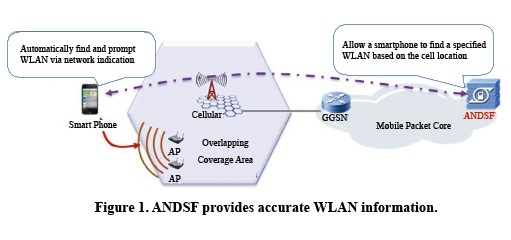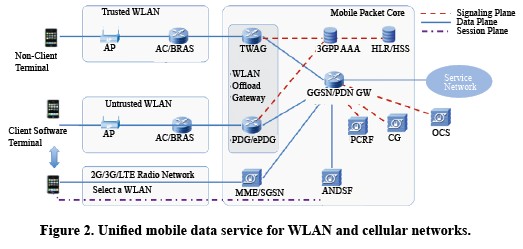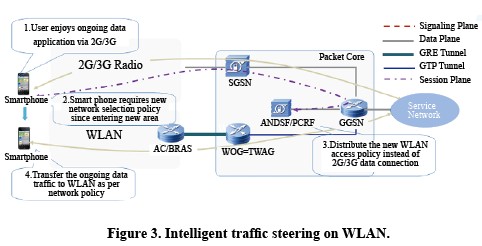Go with WiFi for Better Mobile Experience
As the amount of mobile data traffic grows, the task of expanding and evolving cellular spectrum has become a challenge for mobile operators. The fast uptake of mobile data services means that operators’ network can no longer meet pressing customer demand for traffic. The spectrum available for mobile applications is limited.
WiFi is the hope of the future. WLAN allows mobile traffic to be offloaded from the limited cellular spectrum and is a way of balancing investment with revenue. WLAN offloading has the advantages of simple and widespread deployment, cost efficiency, and publicly available spectrum.
There are some WLAN offloading solutions that enable better user experience.
Automatic WLAN Discovery
WLAN is widely deployed by operators, but most smartphone users still use the 2G/3G mobile data services instead of WLAN because it is difficult to find the correct WLAN network. Users have to make several attempts to access a WLAN.
Automatic WLAN discovery allows users to access a WLAN easily without manually connecting. They no longer need to turn on WiFi all the time, find hotspots, and select the WLAN SSID. The smartphone automatically detects the best WLAN.

The access network discovery and selection function (ANDSF) provides accurate WLAN discovery information to the smartphone. It assists the smartphone to automatically find the nearest WLAN hotspot based on the user’s location. If the WLAN is available, the ANDSF prompts the smartphone.
Even with roaming WLAN, mobile users can get specific WLAN access information from roaming partners via the ANDSF in the home mobile network.
SIM-based WLAN Authentication
Common WLAN authentication methods include web portal, 802.1x EAP-TLS/TTLS, and protected extensible authentication protocol (PEAP). Each of these methods requires the user name and password. However, with ANDSF, the user need only touch the smartphone screen once to access 2G/3G service. Therefore, most users prefer accessing data service via cellular access, even when they are in a shopping mall, airport, or café with WLAN coverage.
Most smartphones have begun to support SIM card WLAN authentication. SIM-based WLAN authentication automatically gives the smartphone complete access authentication at the link layer before any web prompt. The ANDSF client is used to find and access the WLAN automatically. This enables a seamless authentication experience, both in WLAN and 2G/3G.
Unified Mobile Data Service
Many applications on a network are walled-garden services. The operator determines which applications are available on a device’s home portal.
WLAN cannot provide walled-garden services; it is still a solution for local breakout of low-value data services. It provides bad quality service; the user’s mobile identity is lost; there are limited data services; an extra WLAN data plan is required; and it is incompatible with 2G/3G data plans.
A unified data service for both WLAN and 2G/3G networks allows mobile users to enjoy walled-garden services from a WLAN.

With unified access, users of all kinds of smartphones can get unified data service in WLAN and cellular network. The unified data service allows users to select trusted or untrusted WLAN access mode and enjoy all applications from the internet or walled garden. Mobile users can have a data plan for WLAN and cellular, and they will use WLAN more often for more traffic. Users can also enjoy the same traffic policy and service levels—for example, the same QoS assignment, bandwidth management and user profile—in both WLAN and cellular.
Intelligent Traffic Steering
With the intelligent traffic steering solution, when a smartphone detects a WLAN hotspot and, at the same time, the user has an ongoing data session via a cellular connection, the smartphone can initiate WLAN access based on information provided by the ANDSF. The ongoing data traffic can then be automatically transferred to the WLAN without the user even being aware of it. When the device leaves the WLAN hotspot, it automatically switches back to the 2G/3G network.

This solution helps an operator flexibly steer traffic to properly manage the load on the cellular and WLAN networks.
Conclusion
These solutions help wireless operators improve user experience on a WLAN. Better user experience is win-win for operators and users.